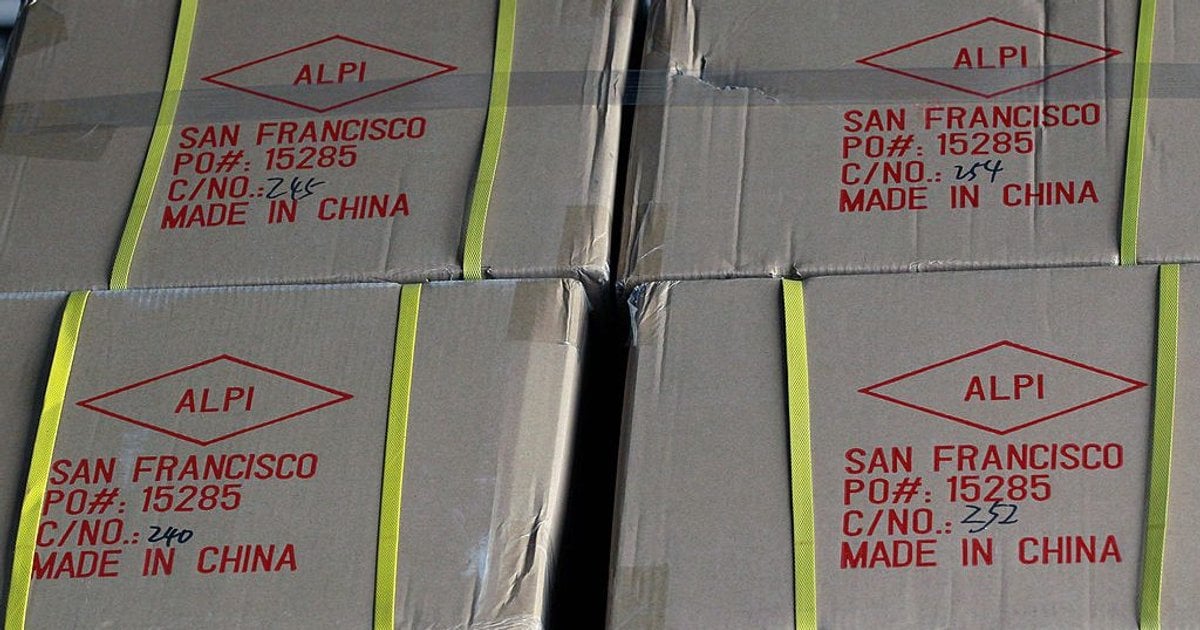Trade War Tremors: How China's Tariff Strikes Back at Global Supply Chains
Manufacturing
2025-04-11 08:00:54Content

In an escalating trade war that threatens global economic stability, China has struck back against the United States with punishing tariffs, raising tensions and sparking widespread concerns about potential economic fallout. The Chinese government has imposed a staggering 84% tariff on certain US goods, retaliating against Washington's recent 104% levy that has already sent shockwaves through international trade circles.
This dramatic tariff exchange is sending tremors across global markets, with experts warning of potentially severe consequences. Economists are particularly concerned about three critical areas of potential disruption: manufacturing supply chains, inflation rates, and financial market volatility.
The tit-for-tat tariff battle represents a significant escalation in the ongoing economic tensions between the world's two largest economies. Manufacturers, investors, and policymakers are watching nervously as the trade conflict threatens to create unprecedented challenges for global commerce.
The rapid and aggressive tariff increases could potentially disrupt international trade networks, increase production costs, and create uncertainty in global financial markets. Small and medium-sized businesses may be especially vulnerable to these sudden and substantial trade barriers.
As the economic standoff continues, the international community remains on high alert, hoping for diplomatic resolution and fearing the potential broader economic implications of this intensifying trade conflict.
Trade War Escalates: US-China Tariff Showdown Threatens Global Economic Stability
In an unprecedented economic confrontation, the United States and China are engaged in a high-stakes tariff battle that threatens to unravel decades of intricate international trade relationships. The rapidly evolving trade war has sent shockwaves through global financial markets, raising critical questions about the future of international commerce and economic diplomacy.Economic Tensions Reach Breaking Point: A Dangerous Game of Tariff Chicken
The Escalating Tariff Landscape
The current trade tensions between the United States and China represent a complex and volatile economic battleground that extends far beyond simple trade negotiations. With the United States imposing a staggering 104% tariff and China retaliating with an equally aggressive 84% levy, the global economic ecosystem finds itself on the precipice of potentially catastrophic disruption. Economists and trade experts are deeply concerned about the cascading effects of these punitive measures. The tariffs are not merely numbers on a spreadsheet but represent a profound threat to global manufacturing supply chains, international trade dynamics, and the delicate balance of economic interdependence that has characterized global commerce for decades.Manufacturing Sector Under Unprecedented Pressure
The immediate and most visceral impact of these tariffs will be felt within the manufacturing sectors of both nations. Companies that have spent years optimizing complex international supply chains now face the daunting prospect of radical restructuring. Small and medium-sized enterprises, which often lack the financial resilience of multinational corporations, are particularly vulnerable to these sudden and dramatic trade barriers. Manufacturing costs are expected to surge dramatically, potentially triggering a domino effect of price increases across multiple industries. From consumer electronics to automotive components, no sector appears immune to the potential fallout of this escalating trade conflict.Global Economic Ripple Effects
Beyond the direct confrontation between the United States and China, these tariffs threaten to destabilize global economic equilibrium. Emerging markets and developing economies that have relied on stable international trade relationships now face unprecedented uncertainty. Financial markets worldwide are experiencing heightened volatility, with investors scrambling to reassess risk and reallocate resources. The inflationary pressures generated by these trade barriers could potentially trigger a broader economic downturn. Consumer prices are likely to rise, purchasing power could diminish, and the delicate post-pandemic economic recovery might be severely compromised.Geopolitical Implications and Strategic Calculations
This trade war transcends mere economic policy, representing a complex geopolitical chess match between two global superpowers. Each tariff represents not just an economic instrument but a strategic statement of national economic sovereignty and technological competitiveness. The United States appears intent on reshaping its economic relationship with China, challenging decades of established trade norms. China, meanwhile, is positioning itself to demonstrate economic resilience and challenge what it perceives as unilateral economic aggression.Potential Pathways and Diplomatic Resolutions
Despite the current confrontational stance, diplomatic channels remain open. Experienced trade negotiators and international diplomats are working behind the scenes to find potential compromise solutions that could de-escalate the current tensions. The international community, including multinational organizations and neutral economic powers, are closely monitoring the situation, prepared to intervene and mediate if the economic standoff threatens broader global stability. As the world watches this high-stakes economic confrontation unfold, one thing becomes increasingly clear: the outcome of this trade war will have profound and long-lasting implications for global economic architecture, international relations, and the future of international trade.RELATED NEWS
Manufacturing

Driving Indiana's Future: Inside Conexus' Bold Vision for Manufacturing and Logistics
2025-04-04 16:53:30
Manufacturing

Biotech Giant Amgen Pumps $900M into Ohio, Signaling Major US Manufacturing Boost
2025-04-28 09:37:12
Manufacturing

Sky-High Innovation: How 3D Printing is Revolutionizing Aerospace Engineering
2025-04-14 16:25:30





